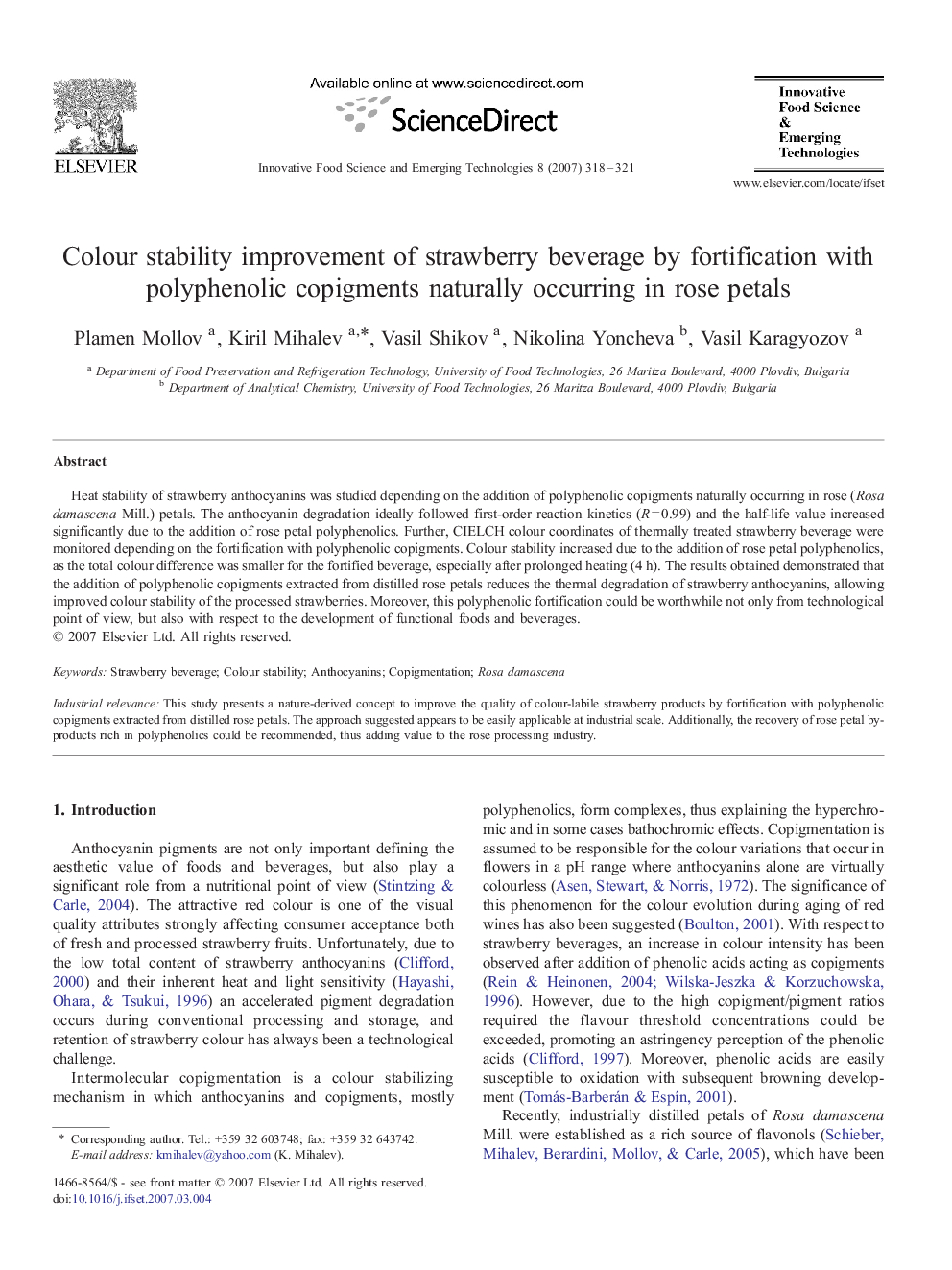| Article ID | Journal | Published Year | Pages | File Type |
|---|---|---|---|---|
| 2087493 | Innovative Food Science & Emerging Technologies | 2007 | 4 Pages |
Heat stability of strawberry anthocyanins was studied depending on the addition of polyphenolic copigments naturally occurring in rose (Rosa damascena Mill.) petals. The anthocyanin degradation ideally followed first-order reaction kinetics (R = 0.99) and the half-life value increased significantly due to the addition of rose petal polyphenolics. Further, CIELCH colour coordinates of thermally treated strawberry beverage were monitored depending on the fortification with polyphenolic copigments. Colour stability increased due to the addition of rose petal polyphenolics, as the total colour difference was smaller for the fortified beverage, especially after prolonged heating (4 h). The results obtained demonstrated that the addition of polyphenolic copigments extracted from distilled rose petals reduces the thermal degradation of strawberry anthocyanins, allowing improved colour stability of the processed strawberries. Moreover, this polyphenolic fortification could be worthwhile not only from technological point of view, but also with respect to the development of functional foods and beverages.Industrial relevanceThis study presents a nature-derived concept to improve the quality of colour-labile strawberry products by fortification with polyphenolic copigments extracted from distilled rose petals. The approach suggested appears to be easily applicable at industrial scale. Additionally, the recovery of rose petal by-products rich in polyphenolics could be recommended, thus adding value to the rose processing industry.
